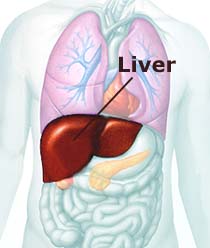| Outcomes
of Acute Hepatitis C Virus Infection in People with HIV By
Liz Highleyman Several
prior studies have indicated that HIV
positive individuals with chronic hepatitis C virus (HCV) tend to experience
more rapid liver disease progression than HIV negative people with hepatitis
C. Furthermore, people with HIV are less
likely to experience spontaneous HCV clearance without treatment,
and therefore are more likely to develop chronic
liver disease. Two
studies presented at the recent 59th Annual Meeting of
the American Association for the Study of Liver Diseases (AASLD 2008) in San
Francisco looked at outcomes in HIV
positive patients with acute HCV.
New
York City Outbreak
 Recent
outbreaks of apparently sexually transmitted HCV among HIV positive men who have
sex with men (MSM) provide an opportunity to study acute hepatitis C. People with
HIV are advised to be screened for HCV, and those on HAART should receive regular
liver function tests to monitor for antiretroviral toxicity, which can reveal
HCV infection at its earliest stages. Patients identified and treated with interferon-based
therapy at this stage are more likely to experience sustained
response than those with chronic HCV infection. Recent
outbreaks of apparently sexually transmitted HCV among HIV positive men who have
sex with men (MSM) provide an opportunity to study acute hepatitis C. People with
HIV are advised to be screened for HCV, and those on HAART should receive regular
liver function tests to monitor for antiretroviral toxicity, which can reveal
HCV infection at its earliest stages. Patients identified and treated with interferon-based
therapy at this stage are more likely to experience sustained
response than those with chronic HCV infection.
Researchers at Mount
Sinai School of Medicine analyzed factors influencing spontaneous clearance of
acute HCV in HIV positive individuals, as well as response to treatment. As background,
they noted that recent data suggest sexual exposure to HCV might be associated
with greater likelihood of spontaneous clearance.
 | Hepatitis
C Virus |
The
investigators prospectively enrolled 22 HIV positive MSM infected during an ongoing
outbreak of acute HCV in New York City (2005-2008); 1 patient had 2 episodes of
acute HCV. All had recent-onset ALT elevation and dramatic fluctuations in HCV
RNA and/or HCV antibody seroconversion. The median age was about 42 years, 45%
were Caucasian, 41% were Hispanic, and 14% were African-American. Most (70%) were
on HAART, 43% had undetectable HIV RNA, and the median CD4 count was about 500
cells/mm3. All were infected with HCV genotype 1. Most men had sexual activity
as the sole identified risk factor for HCV infection, but 5 reported injection
drug use.
This research team has previously reported that liver
disease progression may be particularly rapid and severe in HIV positive MSM
with acute HCV.
Results
•
11 of 23 acute HCV episodes (48%) were symptomatic.
•
4 of 23 episodes (17%) resulted in spontaneous clearance, defined as HCV RNA persistently
< 600 IU/ml for > 6 months post-diagnosis.
•
Spontaneous clearance was not associated with sexual exposure to HCV.
•
16 men with persistent detectable HCV started treatment with pegylated
interferon plus ribavirin:
•
50% (7 of 14 with available follow-up data) achieved rapid virological response
(RVR; HCV RNA < 600 IU/mL) at week 4 of treatment.
•
93% (13 of 14 with available data) achieved early virological response (EVR) at
week 12.
•
70% (7 of 10 with available data) achieved sustained virological response (SVR)
24 weeks after completing treatment.
•
No significant differences with respect to clinical or virological factors were
identified between patients with and without spontaneous HCV clearance, although
there was a trend toward higher peak ALT levels in patients who developed chronic
infection.
•
Among 14 patients who underwent liver biopsies (median 4.3 months after first
ALT increase), 12 (86%) had stage F2 (moderate) fibrosis and 1 each had stage
F1 (mild) and stage F0 (absent) fibrosis.
•
3 of 4 patients who ultimately experienced spontaneous clearance nevertheless
had stage F2 fibrosis.
•
There were no correlations between treatment outcomes or spontaneous clearance
and degree of fibrosis.
The
investigators noted that "Moderately advanced liver fibrosis was seen during
the acute phase and in the early chronic phase in almost every patient evaluated
suggesting far more rapid fibrosis progression than previously reported in patients
with HIV infection, even in those who eventually had spontaneous clearance." "It
is therefore crucial to detect and treat acute HCV infections during the acute
phase to take advantage of the higher cure rate (70%) and prevent further progression
of the already moderately advanced liver disease," they continued. "We
therefore recommend that HIV-infected MSM be considered a risk group for HCV infection
and that at least yearly screening for HCV antibody be performed in addition to
quarterly surveillance of [liver function tests]."
After treatment,
1 individual who achieved SVR became acutely infected a second time following
a relapse in injection drug use. The researchers were able to confirm reinfection
rather than relapse because he had HCV genotype 1b the first time and 1a the second
time.
"The occurrence of a second episode of acute HCV in one subject
underscores the need for continuing surveillance and better strategies to modify
high risk behavior in this population," they stated.
Division of
Liver Diseases, Mount Sinai School of Medicine, New York, NY; Infectious Diseases,
Mount Sinai School of Medicine, New York, NY; Pathology, Mount Sinai School of
Medicine, New York, NY.
Factors
Predicting Spontaneous Clearance In
a related study, investigators analyzed the natural history and treatment outcomes
of acute HCV infection in 30 HIV positive and 32 HIV negative individuals seen
between 2000 and 2008 at Mount Sinai, the University of Pennsylvania, the Philadelphia
Veterans Affairs (VA) Medical Center, and the Brooklyn VA Medical Center.
Most
were white or Hispanic men with a median age of 41 years, but the HIV negative
group included more women (31% vs 3%). HCV risk factors included injection drug
use, high-risk sexual activity, and exposure via healthcare procedures.
Results
•
HCV genotype 1 was most prevalent overall (76%), with subtype 1a being more common
among the coinfected patients (67% vs 16%) and subtype 1b being more common among
those with HCV alone (38% vs 10%).
•
The HIV positive and HIV negative groups had similar peak ALT values and maximum
HCV RNA levels.
•
Spontaneous HCV clearance occurred with similar frequency in both groups (19%
HIV negative vs 13% HIV positive; P = 0.73).
•
16 HIV negative and 18 HIV positive patients started interferon-based therapy
(16 and 10, respectively, had sustained response data available).
•
SVR rates were similar in both groups, 69% for HIV negative patients and 60% for
coinfected patients (P = 0.69).
Based
on these results, the investigators concluded, "In our cohort, natural and
therapeutic HCV clearance occurred with similar frequencies regardless of established
HIV coinfection, suggesting that HIV-associated CD4 T-cell dysfunction does not
necessarily prevent HCV clearance."
"These findings strongly
support the need to identify and treat acute hepatitis C early in HIV-infected
patients," they added. "Work is ongoing to examine the relevant host-virus
interactions in these patients." University
of Pennsylvania, Philadelphia, PA; Philadelphia VAMC, Philadelphia, PA; Pennsylvania
Hospital, Philadelphia, PA; Brooklyn VAMC, Brooklyn, NY; Mount Sinai Medical Center,
New York, NY.
11/18/08
References
AJ Uriel, DS
Fierer, DC Carriero, and others. An On-going Outbreak of Acute HCV in HIV-infected
Men in New York City: Rates of Spontaneous Clearance and Treatment Responses.
59th Annual Meeting of the American Association for the Study of Liver Diseases
(AASLD 2008). San Francisco. October 31-November 4, 2008. Abstract 503.
LM
Jones, AJ Uriel, DE Kaplan, and others. Natural History and Treatment Outcome
of Acute Hepatitis C with and without HIV Co-infection in a North American Cohort.
59th Annual Meeting of the American Association for the Study of Liver Diseases
(AASLD 2008). San Francisco. October 31-November 4, 2008. Abstract 1838. |

![]()

 Recent
outbreaks of apparently sexually transmitted HCV among HIV positive men who have
sex with men (MSM) provide an opportunity to study acute hepatitis C. People with
HIV are advised to be screened for HCV, and those on HAART should receive regular
liver function tests to monitor for antiretroviral toxicity, which can reveal
HCV infection at its earliest stages. Patients identified and treated with
Recent
outbreaks of apparently sexually transmitted HCV among HIV positive men who have
sex with men (MSM) provide an opportunity to study acute hepatitis C. People with
HIV are advised to be screened for HCV, and those on HAART should receive regular
liver function tests to monitor for antiretroviral toxicity, which can reveal
HCV infection at its earliest stages. Patients identified and treated with 